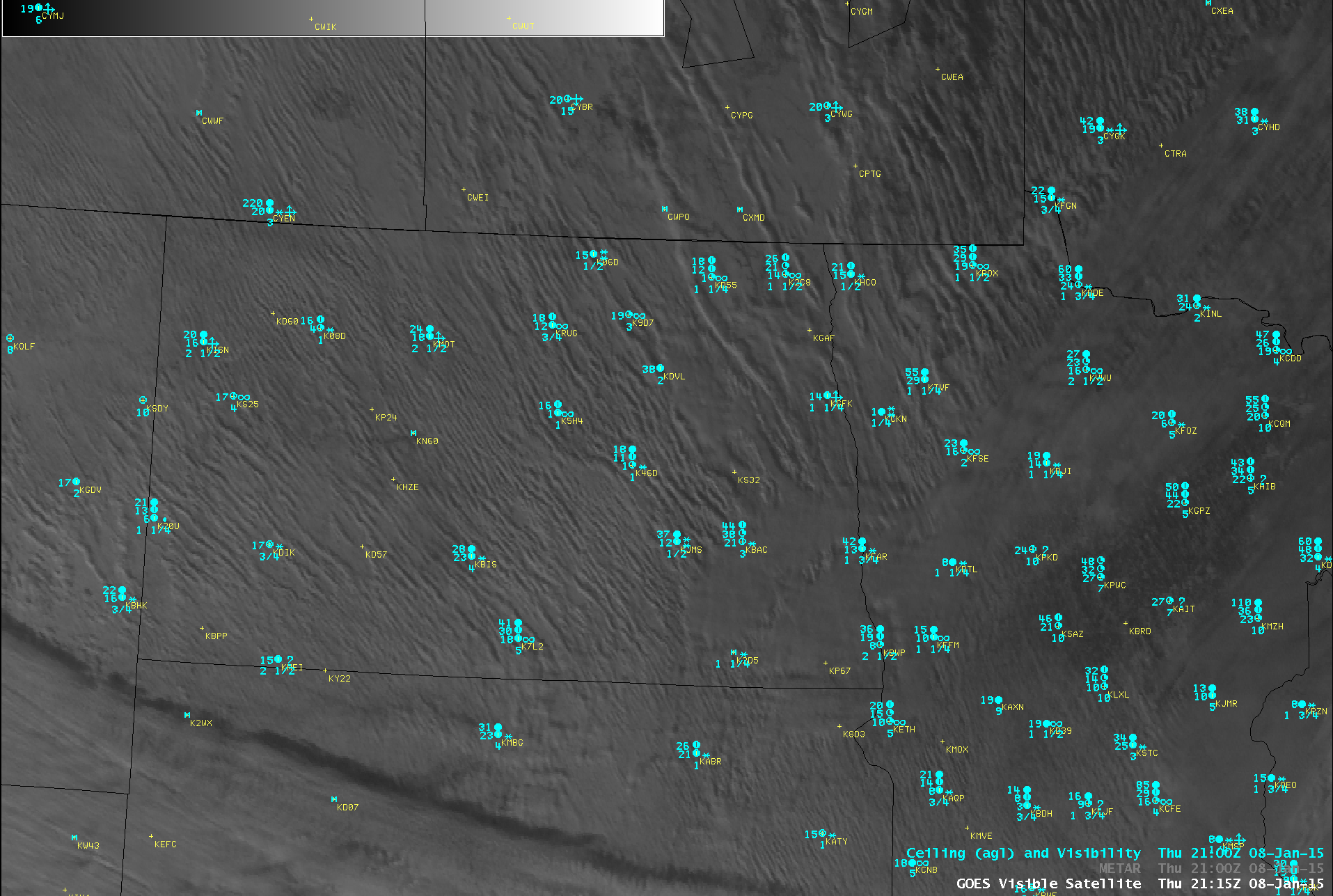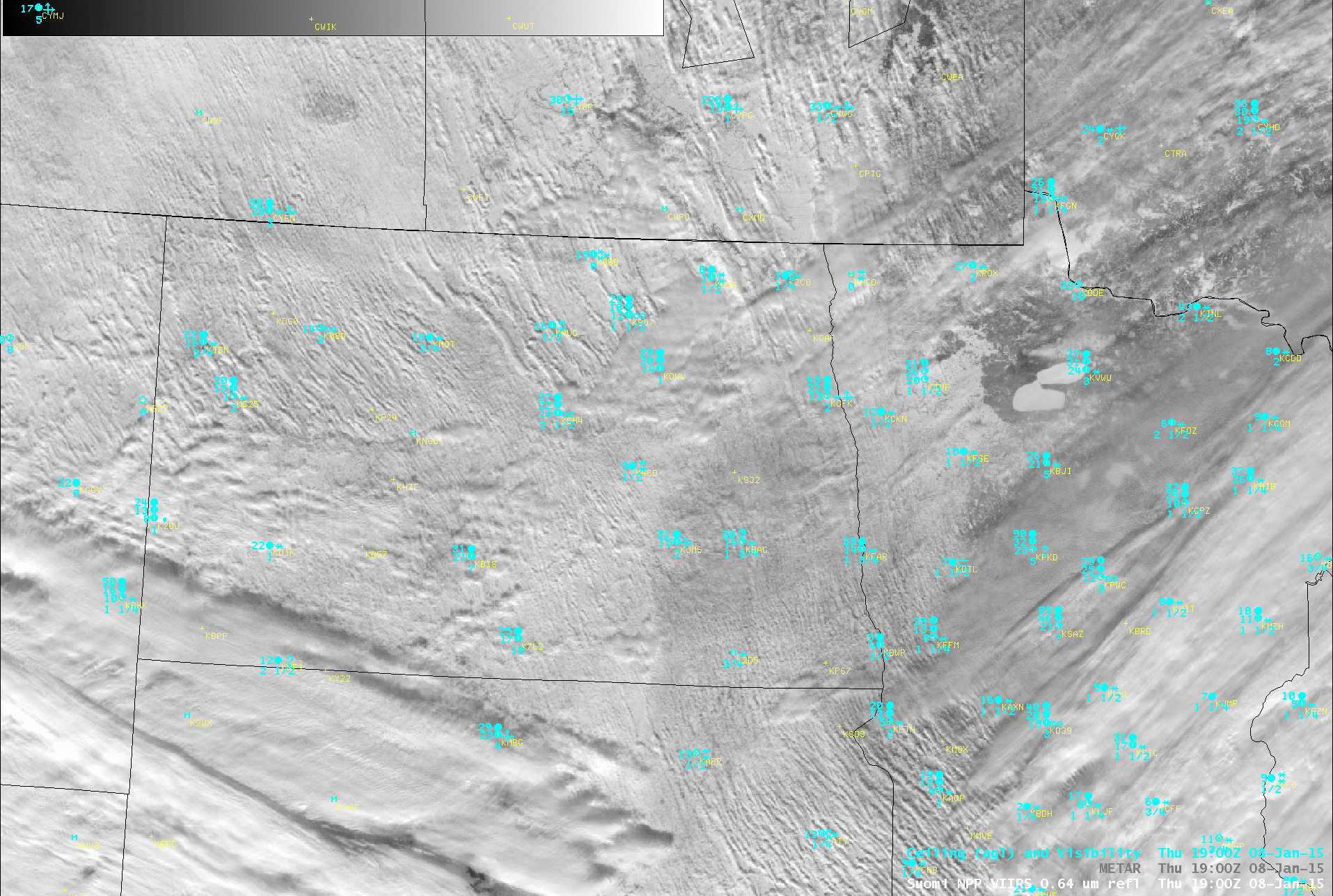Horizontal convective rolls: a satellite signature of blowing snow and ground blizzard conditions
An Alberta Clipper disturbance quickly moved through the north-central US during the day on 08 January 2014, leaving only light amounts of snowfall (generally 1 inch or less). However, very strong winds in the wake of the system (with gusts as high as 59 mph at Bismarck, North Dakota and 69 mph at Bullhead, South Dakota) produced ground blizzard conditions as the newly-fallen light, fluffy snow was lofted and organized into long horizontal convective roll features. GOES-13 0.63 µm visible channel images with overlays of METAR surface reports (above; click image to play animation) and overlays of cloud ceilings and surface visibility (below; click image to play animation) distinctly showed the widespread horizontal convective rolls, along with their effect on the weather as they moved near or over various locations.

GOES-13 0.63 µm visible channel images with cloud ceilings and surfaces visibilities (click to play animation)
One question that arises is: are these horizontal convective roll features clouds, or simply highly-concentrated areas of blowing snow, or perhaps a little of both? A comparison of Suomi NPP VIIRS 0.64 µm visible channel, 3.74 µm shortwave IR, and 11.45 µm IR images at 19:00 UTC (below) might shed some light on the topic. As seen on the GOES-13 visible images, many of the roll features were tall enough to cast a shadow — this suggests vertical mixing to the top of the boundary layer, which appeared to be about 1 km deep on the morning Bismarck ND rawinsonde report. A few sites reported heavy snow (reducing visibility as low as 0.15 mile) as a horizontal convective roll moved overhead — however, the 11.45 µm IR brightness temperatures were barely colder than -20 to -25º C for even the most well-defined roll features (so their ability to produce heavy snow seems dubious). On the 3.74 µm shortwave IR image, if supercooled water droplet clouds had formed at the top of the roll features, they would appear darker (due to the reflection of solar radiation off the supercooled cloud droplets) — but this is not the case.

Suomi NPP VIIRS 0.64 µm visible channel, 3.74 µm shortwave IR channel, and 11.45 µm IR channel images
Suomi NPP VIIRS true-color Red/Green/Blue (RGB) images from the SSEC RealEarth web map server (below) demonstrated the value of overlaying Google Maps information, for example to see which highways might be impacted by the larger and more well-organized horizontal convective rolls at that particular time.



